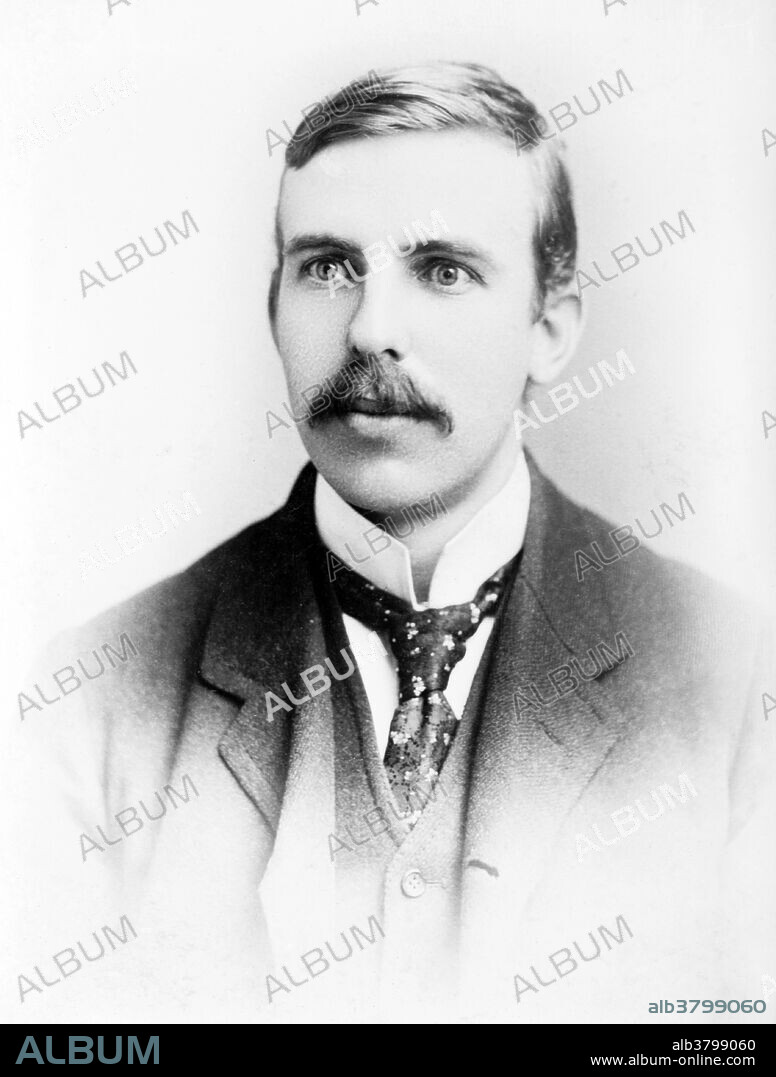alb3799060
Ernest Rutherford, New Zealand Physicist

|
Añadir a otro lightbox |
|
Añadir a otro lightbox |



¿Ya tienes cuenta? Iniciar sesión
¿No tienes cuenta? Regístrate
Compra esta imagen.
Selecciona el uso:

Título:
Ernest Rutherford, New Zealand Physicist
Descripción:
Ver traducción automática
Ernest Rutherford (August 30, 1871 - October 19, 1937) was a New Zealand-born British chemist and physicist who became known as the father of nuclear physics. He discovered the concept of radioactive half-life, proved that radioactivity involved the transmutation of one chemical element to another, and also differentiated and named alpha and beta radiation, proving that the former was essentially helium ions. This work was done at McGill University in Canada. It is the basis for the Nobel Prize in Chemistry he was awarded in 1908. In 1911, he theorized that atoms have their positive charge concentrated in a very small nucleus, and thereby pioneered the Rutherford model of the atom, through his discovery and interpretation of Rutherford scattering in his gold foil experiment. He is widely credited with first "splitting the atom" in 1917 in a nuclear reaction between nitrogen and alpha particles, in which he also discovered (and named) the proton. After his death in 1937, he was honored by being interred with the greatest scientists of the United Kingdom, near Sir Isaac Newton's tomb in Westminster Abbey. The chemical element rutherfordium (element 104) was named after him.
Personas:
Crédito:
Album / LOC/Science Source
Autorizaciones:
Tamaño imagen:
3600 x 4750 px | 48.9 MB
Tamaño impresión:
30.5 x 40.2 cm | 12.0 x 15.8 in (300 dpi)
Palabras clave:
BLANCO Y NEGRO • BRITANICO • CIENCIA • CIENTIFICO • ERNEST RUTHERFORD • FAMOSA • FAMOSO • FAMOSOS • FIGURA • FÍSICA (CIENCIA) • FÍSICO (CIENTIFICO) • FOTO • FOTOGRAFIA • GANADOR DEL PREMIO NOBEL • GENTE • HISTORIA • HISTORICO • HOMBRE • HOMBRES • IMPORTANTE • MASCULINO • NOBEL • PERSONA • PERSONALIDAD • PERSONALIDADES • PORTRAIT • PREMIO NOBEL • QUIMICA • QUIMICO • RETRATO DE HOMBRE • RETRATO • RUTHERFORD • S. XX • SIGLO XIX • SIGLO XX


 Pinterest
Pinterest Twitter
Twitter Facebook
Facebook Copiar enlace
Copiar enlace Email
Email
